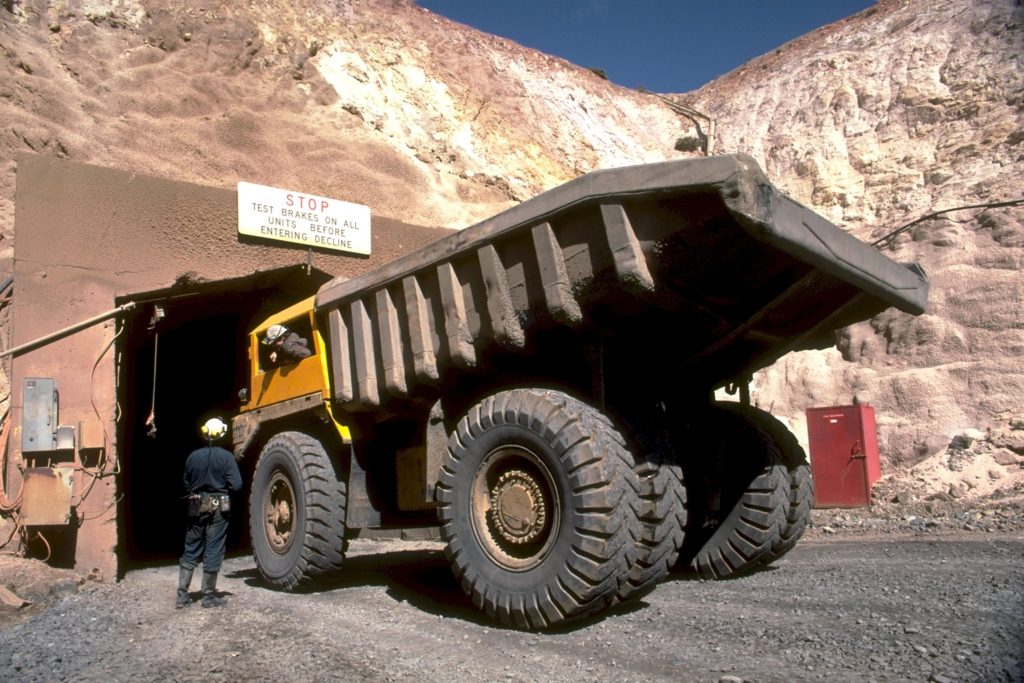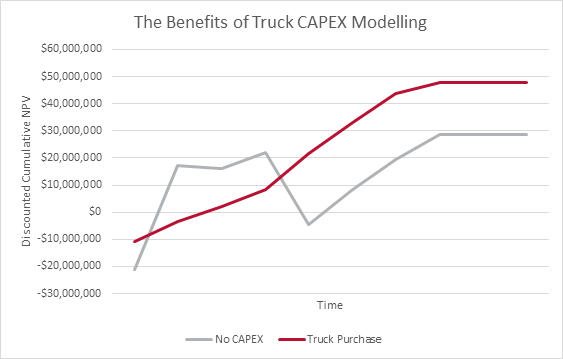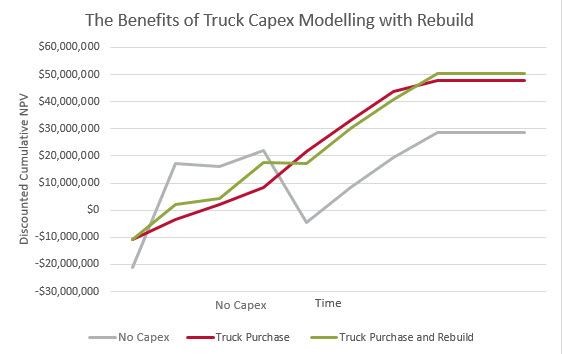Throughout my years of developing mine scheduling software and supporting its users, I’ve seen many approaches to modelling capital expenditure. Unfortunately, a common approach in the industry is to ignore Capex and simply hope for the best.
Even when capital is considered, the process often comes down to a best guess from either management or a mining engineer. Despite years of experience and sometimes great gut instincts, these decisions aren’t perfect.
As you can imagine, this doesn’t lead to optimal results. Costs at this scale can hugely influence your total profit, often determining the success or failure of your project.
Capital decisions are one of the largest – if not the largest – costs in your project.
Truck Purchases
The Problem
Stop for a moment to consider how you currently determine your trucking requirements.
Do you decide on the number of trucks before you start scheduling? Do you schedule and then purchase trucks based on those requirements? Do you even consider the number of trucks at all?
Now think about the value of those trucks. Consider their purchase costs, and the costs of purchasing replacement trucks over the lifetime of your schedule.
How much are those costs eating into your profits? Is your schedule really optimal if you haven’t considered the value invested into your capital?
The Solution
Let’s take a simple example, and schedule it without truck purchases (No Capex Model) and with truck purchases (Truck Purchase Model) to see what the potential benefit might be. We’ll use a single pit mine of 177M tonnes, with 14.7M tonnes of ore.
No Capex Model
For our first schedule, we’ll constrain the mill to between 1.5M and 2M tonnes per year, and constrain the total material movement at 50M tonnes to represent a reasonable guess at the limit for the mine. We’ll also set up some basic costs and revenues.
After running the schedule, we’ll inspect the schedule and determine when and how many trucks will be required to meet the scheduled movements. These purchases will be deducted from the resulting profits to determine true NPV.
Truck Purchase Model
For our second schedule, we’ll change the total material movement constraint to allow modelling of our truck purchases. We’ll set the initial constraint to 0 tonnes to represent that we’re starting with no trucks. If we had pre-existing trucks, we could model them here and then allow for future purchases to replace them or increase their capacity.
We’ll then create the definition for a small truck. Let’s make it $1.5M, and give it a maximum capacity profile of 2.5M, 2.8M, 2.5M, and 1M tonnes in the first, second, third, and fourth years of its lifespan respectively. This capacity profile will represent the maximum number of tonnes that a single truck can move, varied over time due to expected maintenance requirements and performance degradation. In the model, we will allow for any number of trucks to be purchased at any time.
Comparing the No Capex and Truck Purchase Schedules
After running both models through strategic mine planning software using a MILP-based optimizer, we get an NPV increase of more than 66% by including our truck purchases in the model:
This saving is primarily achieved due to the optimizer’s understanding that fewer new trucks should be purchased in the middle of the schedule. The potential value of purchasing trucks decreases as the schedule reaches its end.
By including these details in our model, the optimal number of trucks and the times to purchase them have been calculated. This in turn has altered the schedule itself. Combined, the overall profitability of our mine has been increased substantially.
Truck Rebuilds
Concept
Sometimes, instead of purchasing a new truck, you could choose to rebuild an existing one. This incurs a fraction of the cost, but doesn’t give you the same capability that a new truck would. This option adds a new degree of complexity to the scheduling process: is it better to rebuild an old truck, or to purchase a new one?
Truck Purchase and Rebuild Model
To determine the optimal choices for our example mine, let’s add a truck rebuild option to the model. We’ll allow for a purchased truck to be rebuilt once it has reached the end of its normal lifespan. For a cost of $250K, we’ll give it an additional capacity profile of 1.5M and 1.8M tonnes per year for the first and second years after rebuild. The initial 1.5M capacity is lower to account for the downtime it would take to rebuild the truck.
Comparing the Rebuild and No Rebuild Models
After running the new model through our optimization software, we get an additional NPV increase of 4.7% over the truck purchase model (or 74% over the no Capex model):
While the rebuild-inclusive model still purchases some trucks in the middle of its schedule, it doesn’t purchase as many. The decreased production and lower waste movement requirements toward the end allow for rebuilds to replace mid-to-late purchases. This avoids heavy purchase costs, while still allowing for the completion of mining.
Summary
By including truck purchase and rebuild Capex options into our model and schedule optimization process, we have added significant value to our example project. This increase is not unusual; results can often be even better for real-life scenarios. When considering other forms of Capex (mill options, rail development, etc.), the increase in value can be staggering.
I hope I have shown you how simple it can be to model Capex when you have access to capable software. In fact, I set up and ran these examples in just a few minutes.
Surprised? You can see that there really is no excuse for leaving value behind by not scheduling your truck purchases and rebuilds, particularly when that value could be the difference between failure and success.
Modelling truck purchases and rebuilds adds significant value to your project which could be the difference between failure and success.
Would You Like to Know More?
I used Minemax Scheduler software to produce the examples in this article. A more detailed example of how other Capex can be modelled can be found in this presentation.
If you would like to know more, contact us for more information.


